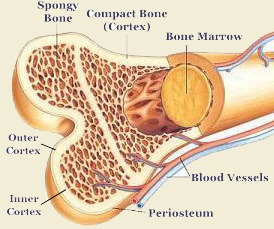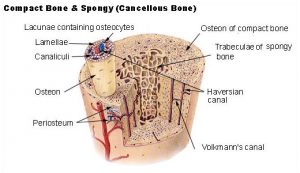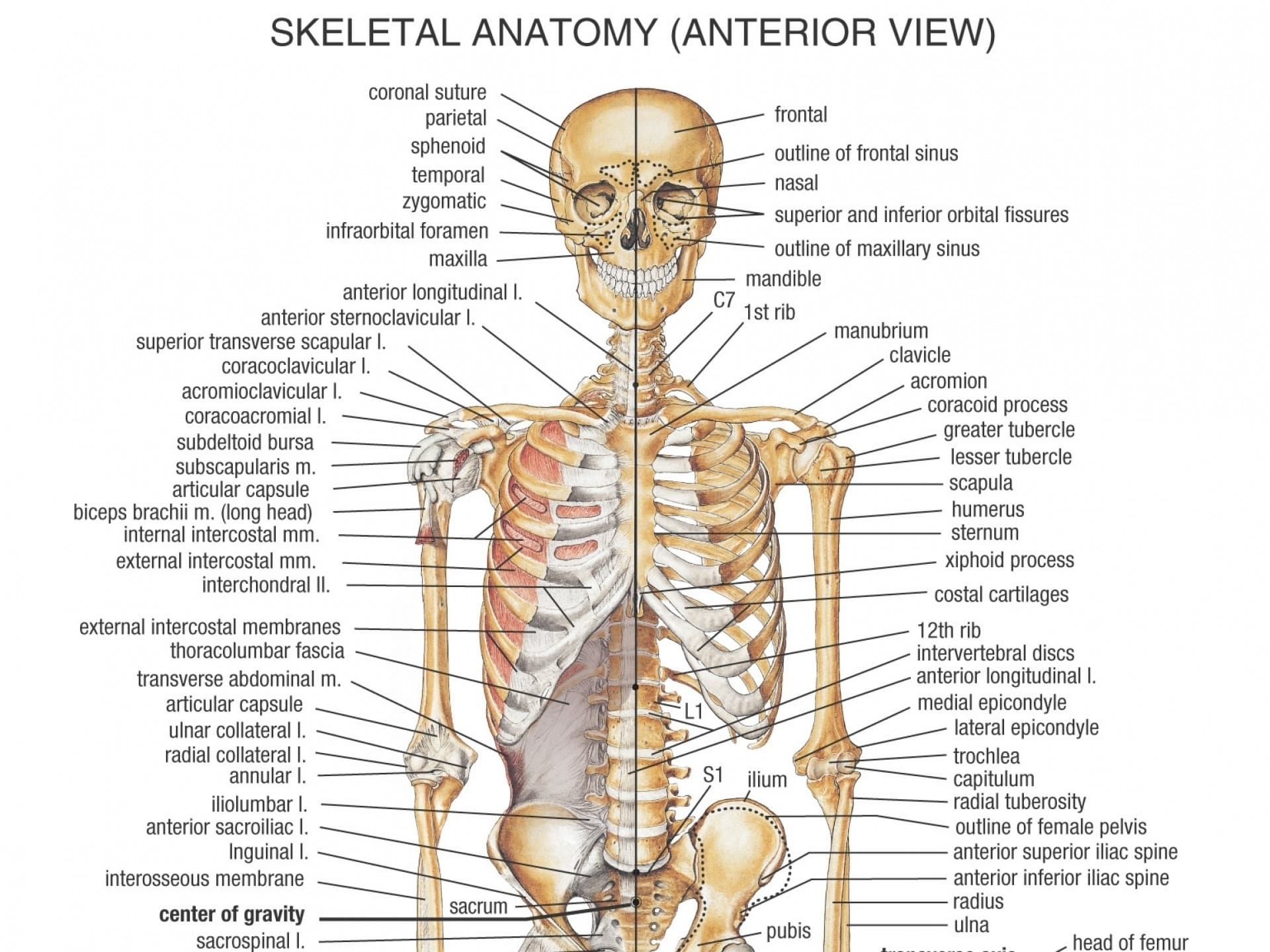What are Bones?
Bones are not inanimate rock like structures in the human body; bones are organs that produce red and white blood cells, store minerals, enable mobility, and provide structural support for the body. They are lightweight, strong, and hard, and function within the body in many different processes, including autoimmune function. , There are two types of mineralized osseous tissue, or bone tissue, cortical and cancellous, and gives the bones rigidity and a coral-like three-dimensional internal structure. Other types of tissue found in bones include marrow, endosteum, periosteum, nerves, blood vessels and cartilage.
Primary Nutrients
Most literature proposes Calcium and Vitamin D as the primary nutrients for healthy bones.
Calcium is important in bone creation and repair. Your muscles, organs, and nerves also need calcium to function properly; nerves use sodium to pump electricity through nerves in the form of action potentials. Calcium helps to keep these actions potentials from excessively firing by working in concert with GABA receptors, most notably in high intensity auditory transduction. (http://phys.org/news/2007-03-calcium-life-death-nerve-cells.html). Leafy greens, fish, and some fruits are great sources of calcium.
Vitamin D is a group of secosteroids responsible for intestinal absorption of primary nutrients such as calcium, iron, and zinc. Vitamin D is synthesized in the skin is the primary way that the body produces the nutrient; though it acts as a hormone because the nutrient travels to become active in the liver and kidneys. Vitamin D has a significant role in calcium homeostasis (balancing) and production in the kidneys and liver. It also affects neuromuscular and immune function.
Protein, magnesium, Vitamin K, and phosphorus are also suggested as beneficial nutrients for bone health.
Bone Structure

Bone tissue, bone marrow, blood vessels, epithelium, and nerves make up the different types of bone cells. Tissue includes Osteoblasts and osteocytes, which are involved in the creation and mineralization of bone; osteoclasts reabsorb bone tissue. The mineralized matrix of bone tissue has an organic component of mainly collagen called ossein and an inorganic component of bone mineral made up of various salts. Bone tissue refers specifically to the bone mineral matrix that forms the rigid sections of the organ. There are two types of bones: cortical and cancellous. Cortical bone tissue create hard exteriors for protection while cancellous bone is more spongy and allows for the metabolic processes on the interior of the organ; the two are biologically identical, but the expression of their microstructures are specialized.
Bone marrow is flexible tissue and reproduces red and white blood cells as well as lymphocytes that support the immune system. Cores of marrow in the heads of long bones create about 500 billion red blood cells per day in hematopoiesis. 4% of human physiology is bone marrow; so about 5 pounds if you weight ~125. The body creates two types of marrow: red, the only type in the body at birth; and yellow, which increases in proportion during the aging process. Transplants can cure extreme diseases and is one of the primary reasons why stem cells can be so beneficial. The body stores marrow in the femur, hips, vertebrae, and ribs.
Osteo Facts
At birth, there over 270 bones in the body, which during the aging process turn into 206 by fusing together (joining). The biggest is the femur
(thigh) and the smallest is the stapes in the inner ear. The hard cortical tissue (outer layer) comprises 80% of mass and networks of trabecular marrow comprise the rest. Bones are mineral reserves for the body and marrow stores fat. They are metabolically very active and work in tandem with the digestive system, immune system, and endocrine system in balancing nutrients, defending against disease, and releasing hormones, respectively. 22 bones fuse together after birth to form the skull. 26 aligned, specialized bones called vertebrae make up the spine, protect the spinal cord, and form the primary support structure for the body.
Aging and Osteoporosis
The problems arising from bones occur in osteoporosis, fractures, arthritis, tumors, and infections can affect the organic tissue. Fractures are breaks in tissue, from repetitive force or trauma. Aging causes osteoporosis; the body stops producing the necessary amount of building material for the body and literally means “holey bone” (porosis meaning hole). Tumors and malignancy’s can occur in various forms in bone tissue as well. This makes it much easier for the bones to fracture.
Cancer
Cancer can also occur in tissues structures and is a common site for it to metastisise to. Several primary cancers occur within the bones and some even within the marrow, such as Leukemia and multiple myeloma. The tissue distorted by cancer is normally more prone to fracture and weakness, which becomes particularly painful when it occurs in the spine.
References:
- AAOS – http://orthoinfo.aaos.org/topic.cfm?topic=A00317
- Wikipedia – https://en.wikipedia.org/wiki/Bone_marrow
- ASU Ask a Biologist – https://askabiologist.asu.edu/bone-anatomy
- Wikipedia – https://en.wikipedia.org/wiki/Neuroregeneration
- NOFG – https://www.nof.org/patients/what-is-osteoporosis/
- Skelton – http://www.innerbody.com/image/skelfov.html

